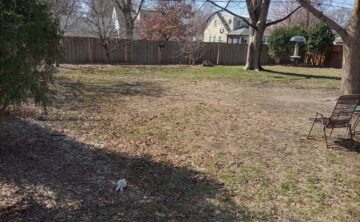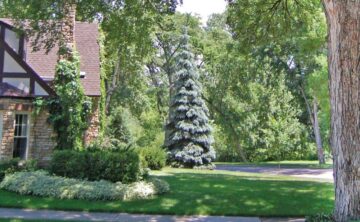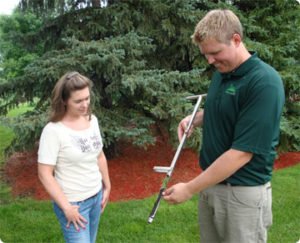How to Fix Thin, Patchy Lawns in Minnesota
Frustrated by thinning grass under your trees or a patchy section on your lawn? A thin, patchy area in your Minnesota lawn can be caused by a variety of reasons, including shade, poor soil quality, and soil compaction. Our lawn care experts created these tips on how to fix patchy grass to help you identify the source of your patchy lawn–knowing the problem is the MOST important part of finding a solution
What causes patchy grass & thinning lawns?
Patchy, thin grass is usually an indicator of a bigger problem. It may be tempting to simply add fertilizer or spread grass seeds. Unfortunately, trying the wrong solution can waste time and money and could potentially make things worse. Understanding what’s causing the problem is the key to successfully overcoming it.

Common causes for thinning grass in Minnesota lawns & how to fix them
Compacted or hard soil
If your soil is too hard (compacted), it creates a hostile environment for growing grass. When soil is packed down, it prevents roots from getting the air, water, and nutrients they need to grow, resulting in thin grass. Compacted or hard soil can be remedied through lawn aeration and soil amendments.

Improper mowing or watering
Good lawn care practices like proper mowing and lawn watering can go a long way toward preventing thin patchy lawns and bringing them back to health.
Not enough fertilizer
Lawns need soil with the proper pH and a balanced composition of nitrogen, phosphorus, and potassium to stay in top condition. You can learn more about fertilizer options and how to apply it yourself in our Homeowner’s Guide to Lawn Fertilization. If you’re in our Twin Cities service area, we offer a variety of custom-tailored fertilizer packages to fix your patchy lawn.
A disease or insect problem
Lawn diseases, such as powdery mildew, or insects like Japanese Beetles and grubs, can create thin, patchy grass. The first step is to properly diagnose what insect or disease may be impacting your lawn. From there, you can apply a treatment–or seek professional assistance–to correct the underlying disease or insect issue.
Too much shade
Shade problems can also cause or contribute to thinning grass under trees or in random lawn patches. Even grass seeds that have been specially cultivated for use in shaded areas can struggle without enough sunlight, resulting in thin grass growth, straggly grass, and bare patches. The best way to address a densely shaded area is to consider mulch or a different ground cover.
How does soil quality impact thin, patchy lawns?
What can I do to restore my thin, patchy lawn?
If you’re within our Minneapolis and St. Paul metro lawn care service area, you can contact us to schedule a consultation. One of our lawn care experts can diagnose the cause of your patchy lawn and recommend appropriate services to restore a lush, thick lawn.
Want to do it yourself? Here are some additional tips:
- Aerate your lawn if the soil is compacted.
- Consider overseeding at this time, and implement proper watering to support turf growth.
- Make sure you are mowing regularly with a sharp blade.
- Apply a slow-release fertilizer to your lawn.
- Treat underlying insects or diseases in your lawn.
- Contact your local agricultural extension office for soil testing.
Contact us today to evaluate and treat your thin, patchy lawn!
Other items you may be interested in:

Tips for Watering Your Lawn in Minnesota
Why is watering your lawn important? Most living things require water to thrive, and your grass is no exception.

Why We Love Our Lawns: A Brief History Of American Lawn Care
America’s love affair with our lawns is as passionate as ever. However, some things have changed—including our image of the ideal lawn. One person’s dream

Lawn Restoration
If ongoing weed control, fertilization, and overseeding isn’t correcting issues, your lawn may benefit from restoration.



